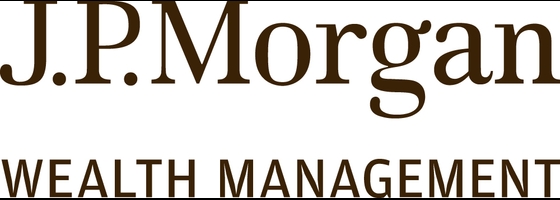IPO Stock: What It Is and How to Buy It

Our evaluations and opinions are not influenced by our advertising relationships, but we may earn a commission from our partners’ links. This content is created by TIME Stamped, under TIME’s direction and produced in accordance with TIME’s editorial guidelines and overseen by TIME’s editorial staff. Learn more about it.
An initial public offering (IPO) occurs when a private company first issues its stock on a major stock exchange, such as the New York Stock Exchange (NYSE) or the NASDAQ. When this happens, company ownership expands from a small group of shareholders to anyone who invests in shares.
Many companies that choose to go public via an IPO are already successful in their industry or niche, while others may be owned by a private equity firm that wants to get its money out of the stock. They are often in industries such as technology or other high-growth sectors, which tend to generate more excitement among potential investors than those in more traditional sectors.
INVESTMENT AND INSURANCE PRODUCTS ARE: NOT A DEPOSIT • NOT FDIC INSURED • NO BANK GUARANTEE • MAY LOSE VALUE
J.P. Morgan Wealth Management is a business of JPMorgan Chase & Co., which offers investment products and services through J.P. Morgan Securities LLC (“J.P. Morgan”), a registered broker dealer and investment adviser, member FINRA and SIPC. TIME Stamped is a publisher of J.P. Morgan, (“Publisher”). The Publisher will receive compensation from J.P. Morgan if you provide contact details to speak with a J.P. Morgan representative. Compensation paid to the Publisher will be up to $500 per completed contact form. Compensation provides an incentive for the Publisher to endorse J.P. Morgan and therefore information, opinions, or referrals are subject to bias. J.P. Morgan and the Publisher are not under common ownership or otherwise related entities, and each are responsible for their own obligations. Investing involves market risk, including possible loss of principal, and there is no guarantee that investment objectives will be achieved.
When a company is ready to go public via an IPO, it goes through the following three-stage process:
The company hires one or more investment banks to underwrite the offering. The bank(s) perform due diligence on the company and usually commit money to buy some of the shares before the stock is listed on a public stock exchange. The company will also hire a law firm to manage the drawing up and filing of documents with the Securities and Exchange Commission (SEC) and an auditing firm to vouch for its financial documents.
The company and its underwriter(s) gauge market interest while the SEC reviews Form S-1, a registration statement containing all necessary information for prospective investors. The company must file this form with the SEC. During the waiting period the company’s senior management may meet with institutional investors to answer any questions they may have. The underwriter(s) will generally facilitate these sessions.
Once the SEC has approved the S-1, the company’s stock becomes available on one of the stock exchanges, and shares begin trading on the public market. The day this happens constitutes the IPO.
To understand IPOs, it’s important to be familiar with the language commonly used in association with them. Here are some key terms.
IPOs are typically offered to the public through brokerage firms and other financial intermediaries. In the case of a brokerage firm, the potential investor may need to be a client of the firm. Not all brokerage firms handle IPOs. Two who do are JP Morgan and TradeStation.
Many brokers will require that you be a client and maintain a minimum balance in your accounts with the firm. They may also require that you execute a minimum number of transactions over a specified period before the IPO. Sometimes, a connection to someone influential at the firm underwriting the IPO may be enough to do the trick.
Some financial advisors may be able to help in your efforts to buy into an IPO. You can search for one with the skills and knowledge needed on WiserAdvisor.
The answer to this question depends on several factors. Is the company one that you feel will be successful in the future? Has it demonstrated solid growth potential? You should also consider the offering price of the IPO. Does it seem reasonable or on the high side? It is not uncommon for an IPO to be heavily hyped only to see the price drop significantly soon after it launches.
Does your investing strategy normally include individual stocks? Many investors focus their portfolios on mutual funds and exchange-traded funds (ETFs). If you’re one of them, an IPO is probably not a good investment choice.
If you invest in an IPO, don’t do it because of media hype. Make sure that the stock has potential and fits with your overall strategy.
There are several reasons that a company might do an IPO, but in general, it is a way for its investors and shareholders to cash out some or all of their stakes. These investors may be the company’s founders, key officers, or private equity firms.
In the latter case, the firm can profit through the stock sale (or at least recoup its investment), freeing up cash for new investments or other business purposes. In either case, a successful IPO can bring a lot of money into the company as it seeks to grow. Once the company is public, it can raise even more capital by offering additional shares of stock in a new public offering.
Just because an investment banker or the media hypes an IPO doesn’t mean it’s a good investment.
Facebook’s parent Meta Platforms made its IPO debut on NASDAQ in 2012 for $38 per share. As of 2024, it was trading at around $500 per share. According to NASDAQ, this represents a gain of 1,213% in the 12 years since its IPO.
On the other hand, rideshare company Lyft went public in March 2019 at just over $78 per share. According to Morningstar, the stock closed at just over $13 per share as of July 8, 2024, a decline of approximately 79% from its IPO price.
IPOs can be an excellent investment when they work. Still, due to their risk and volatility, they should probably be limited to a small portion of your portfolio.
In recent years, we’ve seen the rise of special purpose acquisition companies (SPACs) as an alternative to IPOs for some companies looking to raise capital. A SPAC is a company that raises money through an IPO with the sole purpose of acquiring one or more other companies. SPACs are often formed by prominent Wall Street investors, who use their reputation to help raise funds through the IPO process.
Investors who buy into an SPAC are giving the entity a blank check to purchase other companies. Some SPACs disclose their strategy regarding the types of companies they may seek to acquire; others don’t and may simply rely on the reputation of the lead investors.
SEC rules state that the SPAC must purchase a company within two years or its founders must return the cash invested by the shareholders to them.
Is investing through a SPAC less risky than just buying shares in an IPO? The answer will depend on the IPO purchased versus the investing acumen of the SPAC’s owners. Both options can be a risky choice for investors.
According to Morningstar, we can expect to see several IPOs of prominent companies in the coming months, including:
| Company | Industry |
|---|---|
Stripe | Financial services |
Instacart | Internet retail |
Databricks | Database software |
Northvolt | Alternative energy equipment |
Flexport | Business productivity software |
Klarna | Financial software |
Everly Health | Laboratory services (healthcare) |
HeartFlow | Decision/Risk analysis |
Biofourmis | Decision/Risk analysis |
Headspace | Educational and training services (B2C) |
Quantum Health | Healthcare services |
Whether or not any or all of these companies go the IPO route remains to be seen, so you should monitor the situation to see what develops.
Another way to invest in IPOs is through an exchange-traded fund (ETF) that invests in various IPOs. One such ETF is the Renaissance IPO ETF, which invests primarily in shares of an index that tracks IPOs. While the fund offers diversification by holding several different IPO stocks, returns have been volatile. According to Morningstar, the fund gained over 107% in 2020 while losing more than 57% in 2022.
Overall, the fund is up 5.32% on average per year for the five years ending July 9, 2024. By contrast, the average annual return on the SPDR S&P 500 ETF Trust, a major ETF that tracks the S&P 500 index over the same period, is 15.16%.
IPOs are a way for companies to go public and raise capital for their business. Private equity firms may take companies public that are under their ownership as a way to realize cash. An IPO generally requires an investment banker as an underwriter, who guides the process and ensures that all filings are properly done with the SEC.
And while there is often great excitement surrounding an IPO, investing in one can be risky, so be sure to do your homework before buying one. Regardless, keeping IPOs as a small part of your overall investment portfolio is wise.
This depends on a host of issues, including the IPO company’s stock outlook, where the holding fits in terms of your portfolio, investment strategy, and more. Additionally, you probably should not make a blanket decision on IPOs as a group. Instead, analyze the prospects of each offering on its own merits.
Buying an IPO is not as simple as going online to your brokerage account and purchasing shares of available stock. You will need to find a broker or an app that offers the option of buying IPOs.
In some cases, you may need to meet certain eligibility requirements to participate. This might include having a minimum balance with the brokerage firm offering the IPO or having completed a minimum number of previous transactions with the firm over a specified time period. In some cases, knowing someone of influence at the underwriter of the IPO can help.
Another option is to wait until the IPO starts trading. You can buy at a relative bargain if the share price drops below the initial offering price. If it climbs higher, be careful not to overpay.
As with any investment, there is no guarantee that buying an IPO will yield a positive return. It depends on the company's future performance as well as other factors, such as the state of the economy and the direction of the stock market.
The information presented here is created by TIME Stamped and overseen by TIME editorial staff. To learn more, see our About Us page.




